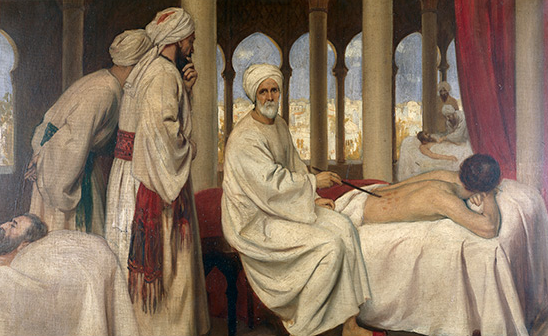Judy Liming Embodied America’s Broken Healthcare System
Judy Liming, from Georgetown, Ohio, embodied the broken U.S. healthcare system. She was mistreated, mischarged, bankrupted, and broken by her care. Like countless other Americans, Judy, who died of complications from breast cancer this summer at the age of 65, was not a patient but a victim of American medicine.
COVID-19 is currently dominating public discussion and debate. But it’s important to remember that the pandemic of runaway healthcare costs predated COVID-19 because patients are blocked from knowing prices and prevented from comparison shopping. Unless policymakers act to shine the light on this darkness and opacity, ruinous after-the-fact overcharging will wreak havoc long after the virus threat is gone.
Legislators can help patients like Judy immediately by passing recently introduced price transparency legislation as part of the economic stimulus package that they’re currently negotiating.
When Judy was diagnosed in 2010, she said that doctors looked at her like a million-dollar patient. Doctors may have had money on their minds when they mistakenly overinfused her with chemotherapy, damaging her lungs, which contributed to her death.
Mistreatment is rare, but price gouging is common. Judy received countless overwhelming, costly medical bills over the years ranging from several hundred to several thousand dollars for treatment-related procedures, such as anesthesia, that she thought were covered by health insurance.
Like roughly 40 percent of cancer patients, Judy filed for bankruptcy due to medical bills. According to the Urban Institute, one in six Americans has medical debt in collections. Medical issues drive two-thirds of U.S. bankruptcies — more than half a million each year.
Eventually, Judy ended up on Medicaid, but that was no savior. She continued to receive fraudulent bills and couldn’t work part-time to afford healthy food, probiotics, and supplements to help with her symptoms because additional income threatened her coverage. I couldn’t even gift her money because it would violate her Medicaid status. She was forced to live off just $940 a month. A hard worker her entire life, she was sapped of her dignity not being able to work. She couldn’t move out of state to be with family because of the confusion and fear of gaps in coverage.

The price of care is not only a wallet and wages issue. Financial hardship leads to worse health outcomes. According to a National Institute of Health study, cancer patients who declare bankruptcy have around an 80 percent higher risk of death. I witnessed the physical toll that Judy’s financial situation took. Cancer complications and poor treatment killed her, but the financial ruin from her bills broke her.
Healthcare costs bankrupt patients like Judy because they are hidden and secret, which leads to price gouging and even fraud. In this cloaked system, patients have no way to compare quality, outcomes, and prices. They receive confusing bills in fragments in the mail weeks and months later. By this time, they have no recourse to seek out less-expensive options. They’re blindsided with outrageously priced care due to no sight into competition and choice.
No wonder healthcare prices are so high. Without price disclosure, providers and insurers can charge essentially whatever they want. Nowhere else in the economy does this ridiculous pricing imbalance against consumers exist. Because nowhere else is price information so hidden.
If hospitals and insurers publish their real prices, then patients and employers can shop on quality, outcomes, and price, getting the best value as consumers. As in other industries, competition in healthcare will improve quality while reducing costs. Like airlines a generation ago and tech companies today, hospitals and insurers will compete by lowering their prices and improving their quality to attract newly empowered consumers.
I’ve seen the power of healthcare price transparency firsthand. In 1992, I founded and was CEO of ViaCord, a cord-blood banking business with laboratory operations in the greater Cincinnati area, and we provided quality and pricing information directly to consumers upfront. As a result, this corner of the healthcare sector — along with LASIK and plastic surgery — remains competitive, without the runaway price inflation that characterizes the rest of the industry.
This summer, Sen. Mike Braun (R-IN) introduced the Healthcare Price Transparency Act, which requires hospitals and insurers to publish their discounted cash prices and secret negotiated rates. Legislators can simply pass this legislation at no cost to taxpayers as part of the massive economic stimulus bill currently being crafted. Doing so will bring long-overdue cost relief to healthcare consumers and provide an economic stimulus of its own.
We can achieve this vision by implementing a functional and competitive healthcare market that will improve quality and lower prices to benefit all Americans. A bipartisan supermajority of around 90 percent of voters supports healthcare price transparency. It seems that almost everyone has a medical billing horror story like Judy. Senate leaders from both parties must now come together to deliver this issue that nine in ten Americans want into law.
Judy’s goal was to live through one more Christmas with her children and grandkids. Sadly, she didn’t make it. But her spirit lives on in those of us fighting to fix this country’s broken healthcare system. In Judy’s words, “We can do better. We must do better.”
Cynthia A. Fisher is a life sciences entrepreneur, the founder and chair of PatientRightsAdvocate.org, and the founder and former CEO of ViaCord, Inc
Source: American Thinker By: Cynthia A. Fisher
